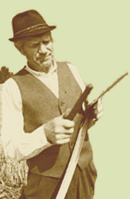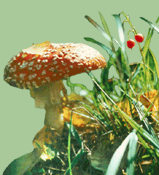The amount of the most important natural resource is on the decrease
Arno-Toomas Pihlak gives a warning overview of the most important resource in the world oxygen. The problems of carbon dioxide and methane as threats to life on Earth, are often discussed in media as well as political and scientific fora. Most of the problems related to the greenhouse gases are closely related to the consumption of oxygen. Oxygen is often considered as a renewable resource. However, this view is clearly wrong. With the help of many diagrams and tables, the author reveals that the resources of oxygen are limited. The article looks at the origin of oxygen and the changes in the natural production of oxygen through geological history of Earth. The main user of oxygen is mankind, the energy sector being most responsible for the overuse of oxygen. The industrial use of oxygen has increased to the extent that will soon bring us the edge of the crisis of civilization. One of the main users of oxygen and the main emitter of carbon dioxide and nitrous dioxide is car transport.
The home bog in danger
Ahto Kaasik reviews the process of protecting the Rannu (Kestla) bog in North-East Virumaa. The Kiviõli chemical plant plans to start peat mining there, but the local population considers the bog of 350 ha as part of their home. In February the Rannu bog protection society was formed. The society has had to fight many battles in order to preserve the bog. Now Ahto Kaasik, the head of the society, brings the arguments for bog protection to the pages of Eesti Loodus.
Losses and doubtful victories
Mati Ilomets, a telmatologist, comments on the disputes over the Rannu bog. He first summarizes the overall peat resources in the area and continues with some scientific arguments for the protection of the bog.
Essay
Erast Parmasto reflects on nature protection regarding fungi.
Linden as a forest tree
Ülo Tamm and Harald Rebane introduce linden forests that used to be so widespread in Estonia five or six thousand years ago. Nowadays linden is in minority. The authors write about the growing conditions of linden in forests.
Linden forests at Järvselja
Heino Kasesalu invites the reader to the genuinely natural linden forest at Järvselja. The forest is about one hundred years old.
The winners of animal photo contest
Five photos of the contest are printed in the magazine.
The poster page
A large-scale photo by Heiko Kruusi, the winner of the animal photo contest.
European rarities in Estonia
Kai Vellak describes two endangered moss species Tortella rigens and encalypta mutica. While most moss species are inhabitants of moist environments, the two rare moss species try to make their living on dry alvar areas amongst colourful blossoms of flowering plants.
Interview: plant pests ought to be destroyed by their natural enemies.
Toomas Kukk has interviewed Anne Luik, professor of plant protection.
Colorful world in nature and on shop counters
Urmas Kokassaar gives a short overview of food colors that are obtained from different colourful plants, such as beet or carrot.
Practical tips: known and unknown canned beans.
Malle Leht writes about beans that can be bought from our food stores. She gives the botanical names and descriptions of the different species that are used for food.
Eesti Loodus enquires
Jaanika Kaljuvee explains the concept of Living Lakes.
Tiit Maran tells about the reintroduction of European mink to the island of Hiiumaa.
Where the sun rises
Anniki Jõesaar portrays some of the peculiarities of Japan and its people, such as the love for flowers and the ultramodern system of sorting waste. Japanese gardens and some natural wonders, like the Fuji Hakone Izu National Park are described as well.
|


![[IN ENGLISH]](images/gb.gif)





